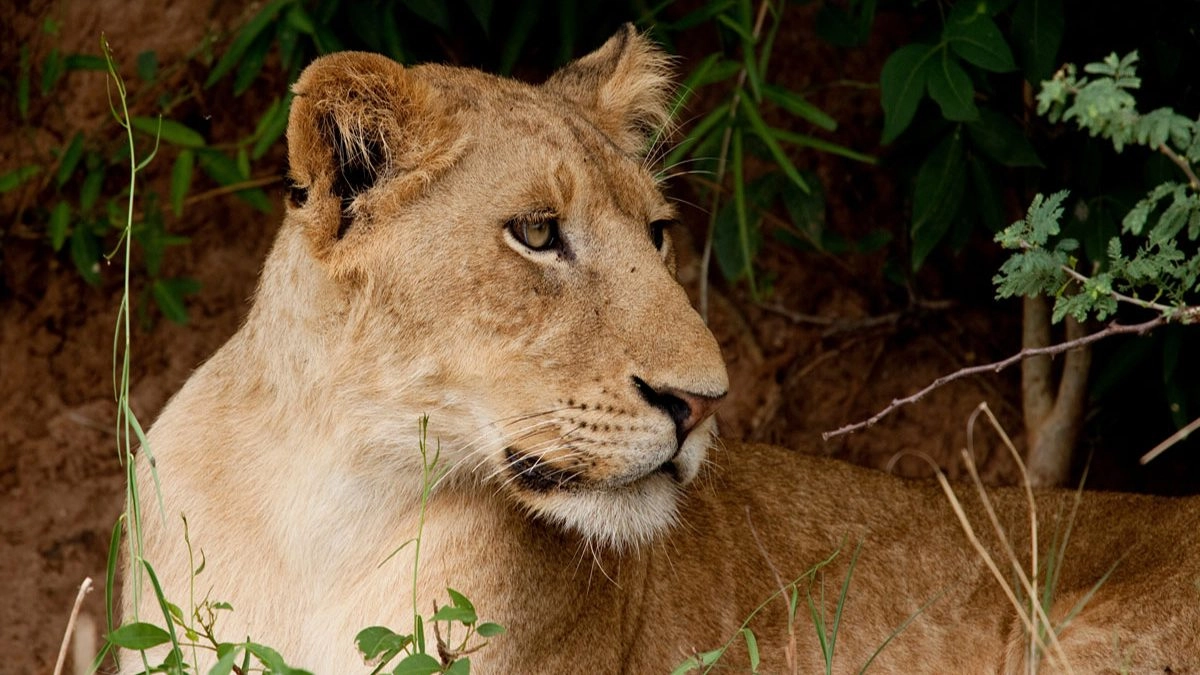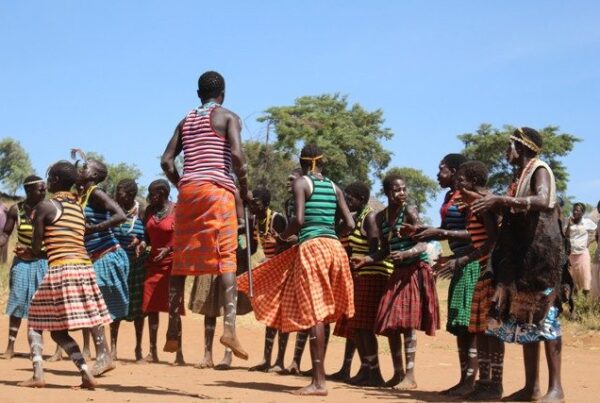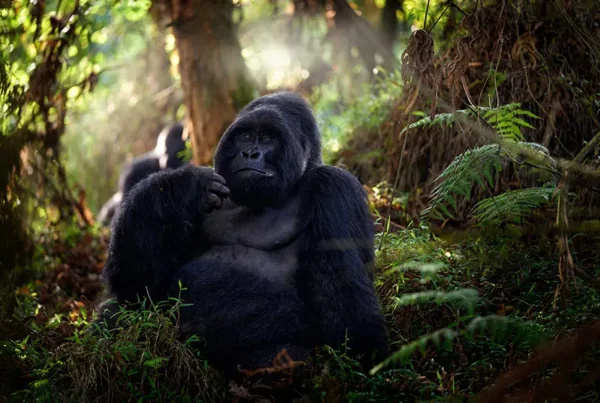Which National Parks in Uganda Are Less Crowded and Off the Beaten Path? | 2026 Uganda Safari Guide
There is a particular kind of magic that draws travelers to Uganda, a land where raw nature still feels untouched, where roads wind through misty mountains and valleys echo with birdsong rather than the hum of engines. While some come for the well-trodden paths of Bwindi Impenetrable National Park or the iconic savannahs of Queen Elizabeth National Park, others long for something quieter — a safari that speaks in whispers rather than roars, where encounters feel personal and the wilderness stretches unbroken to the horizon.
In a world increasingly defined by crowds and commercialization, Uganda remains a sanctuary for those who seek solitude. Beyond its famed destinations lie parks that remain gloriously off the beaten path, where every footstep and tire mark feels like a rediscovery of the wild. These hidden corners of Uganda offer not only peace and exclusivity but also some of the most authentic wildlife experiences on the African continent.
This detailed exploration reveals the national parks that remain less crowded, remote, and profoundly immersive, painting a portrait of Uganda as it once was — untamed, quiet, and breathtakingly pure. Each park carries its own character, rhythm, and reason to be visited, and together they remind the traveler that true adventure still lives in the places where silence reigns.
Uganda’s Wild Soul: The Call of the Uncrowded
Uganda’s tourism growth has been steady yet thoughtful. Unlike neighboring destinations that attract heavy traffic to flagship parks, Uganda’s national parks still maintain a sense of balance between accessibility and preservation. This approach has safeguarded large stretches of wilderness from overdevelopment, allowing certain parks to remain intimate and exclusive.
While iconic sites such as Bwindi, Kibale, and Queen Elizabeth see a steady flow of travelers, especially during peak seasons, several other parks remain quiet sanctuaries. These are the places where wildlife roams free without the constant click of cameras, and where travelers can watch the sunset without another vehicle in sight.
The essence of Uganda’s uncrowded parks lies in space — vastness unbroken by human activity, where landscapes dominate and animals exist on their own terms. Exploring these parks offers not only a wildlife experience but a spiritual one, reminding travelers of what wilderness truly means.
Kidepo Valley National Park: The Forgotten Eden of the North
In Uganda’s far northeastern corner, cradled by rugged mountains and golden plains, lies Kidepo Valley National Park, a wilderness so remote that few travelers ever reach it. Yet those who do often describe it as the most beautiful park in all of Africa. Its isolation, far from the traditional safari circuits, ensures that it remains one of Uganda’s least visited yet most rewarding destinations.
The journey to Kidepo is an adventure in itself — a drive across changing landscapes that shift from green highlands to semi-arid savannahs. Upon arrival, the vastness of the Narus and Kidepo Valleys unfolds like a living painting. Towering acacias stand against the sky, herds of buffalo graze lazily, and distant ridges shimmer under the northern sun.
Wildlife here thrives in abundance yet solitude. Kidepo is home to over 80 species of mammals, including lions, elephants, zebras, giraffes, cheetahs, and the rare greater kudu. The absence of crowds allows for sightings that feel personal and unhurried — lions lounging undisturbed in the grass, elephants crossing open plains without concern, and antelope moving in fluid patterns across the horizon.
The park’s remoteness has preserved not only its ecology but its cultural authenticity. The surrounding Karamojong communities live in harmony with the land, their traditional manyattas and cattle herding lifestyle adding cultural depth to the safari experience. Visitors often find that Kidepo offers more than wildlife; it provides a glimpse into a way of life untouched by modernity.
The difference in Kidepo is not in the number of animals but in the purity of the encounter. There are no convoys of safari vehicles here, no radio calls announcing lion sightings. Instead, there is silence, space, and a sense of discovery that belongs entirely to the traveler. It is Africa in its truest form — vast, wild, and unspoiled.
Semuliki National Park: Uganda’s Secret Rainforest
Hidden in the far west along the border with the Democratic Republic of Congo, Semuliki National Park feels like another world entirely. It is a lowland tropical forest, humid and dense, filled with species found nowhere else in East Africa. For the traveler seeking something beyond the savannah, Semuliki offers a journey into a rainforest ecosystem that belongs more to Central Africa than to the East African highlands.
The park’s remoteness ensures that few venture here, and those who do often find themselves walking beneath towering mahogany trees, surrounded by a symphony of insects and birds. Over 440 bird species have been recorded, including the Congo serpent eagle, Nkulengu rail, and African dwarf kingfisher — species rarely seen elsewhere.
Mammals include forest elephants, pygmy hippos, and elusive chimpanzees, though sightings are more a matter of patience than guarantee. What truly sets Semuliki apart, however, is its atmosphere — thick, humid, and alive with mystery. The Sempaya Hot Springs, bubbling with geothermal energy, are a surreal reminder of the earth’s hidden power beneath the forest floor.
Semuliki’s isolation keeps it peaceful, untouched by large tour groups or commercial lodges. Exploring it requires curiosity and a willingness to embrace the unknown, but for those who do, it offers one of Uganda’s most authentic off-the-beaten-path experiences. It is not a park of spectacle but of subtlety — a place where nature whispers rather than shouts.
Mount Elgon National Park: Where Adventure Meets Solitude
To the east, rising gently along the border with Kenya, stands Mount Elgon National Park, a realm of waterfalls, cliffs, and ancient volcanic slopes. Unlike Uganda’s more famous gorilla or savannah parks, Elgon attracts primarily trekkers and nature lovers rather than typical safari-goers, making it one of the country’s quietest national parks.
Mount Elgon is home to the world’s largest volcanic caldera, an expansive landscape of moorlands, montane forests, and bamboo zones. Wildlife is not as abundant as in Murchison or Queen Elizabeth, but the park’s serenity and geological grandeur make it exceptional. Duikers, forest elephants, and colobus monkeys inhabit the lower slopes, while birdwatchers are treated to over 300 avian species, including the rare Jackson’s francolin and taciturn turaco.
The real beauty of Elgon lies in its trekking trails, which wind past waterfalls such as Sipi Falls, caves filled with ancient paintings, and valleys dotted with wildflowers. The altitude ensures cool weather, and the lack of crowds transforms every hike into a meditation. Travelers who climb to the caldera rim find themselves surrounded by silence so deep it feels sacred — a landscape untouched by time.
Elgon is for those who prefer introspection over indulgence, adventure over luxury. It is not a park of game drives but of discovery — a place where each step reveals another secret of Uganda’s landscape.
Toro-Semliki Wildlife Reserve: The Overlooked Gem
Nestled between Fort Portal and Lake Albert, the Toro-Semliki Wildlife Reserve is often overshadowed by its larger neighbors. Yet it stands as one of Uganda’s most enchanting and underrated destinations. This reserve combines savannah, woodland, and riverine habitats, offering a blend of East African and Central African ecosystems.
Wildlife here includes elephants, buffalo, warthogs, and several antelope species, as well as predators like leopards. However, what truly makes Toro-Semliki special is the feeling of seclusion — it is common to explore the park and encounter not another vehicle for hours. The reserve’s lodges are small, often nestled within the landscape itself, providing intimacy that larger parks cannot match.
The nearby Semliki River forms a natural boundary with the Congo and creates a lush corridor for birds and mammals. The reserve is also one of the few places in Uganda where visitors can enjoy walking safaris, offering a ground-level perspective of the wild. The sounds of rustling grass, distant birdcalls, and the soft flow of the river replace the mechanical hum of engines.
For travelers yearning for serenity without sacrificing comfort, Toro-Semliki is a revelation — a bridge between Africa’s two great ecosystems and a reminder that beauty often lies in the places least explored.
Pian Upe Wildlife Reserve: Uganda’s Wild East
In the vast plains of northeastern Uganda, where golden grasses meet distant hills, lies Pian Upe Wildlife Reserve, one of the country’s largest and least visited protected areas. Once a hunting ground, Pian Upe has been steadily restored into a haven for wildlife and solitude.
Its sheer size — nearly 2,700 square kilometers — ensures that even during high travel seasons, visitors may feel as if they have the entire reserve to themselves. The landscape resembles the great savannahs of East Africa, but with an added sense of tranquility.
Wildlife here includes eland, hartebeest, oribi, giraffes, and zebras, along with a growing population of lions and leopards. Birdlife is prolific, with species like ostriches and secretary birds striding across open plains. Because Pian Upe is still developing its tourism infrastructure, the experience remains raw and adventurous.
Travelers often combine Pian Upe with visits to Mount Elgon or Kidepo, creating a route through Uganda’s remote northeast that feels both ancient and alive. It is the kind of place where sunsets paint the horizon in silence and where the thrill of exploration returns to its primal roots.
Rwenzori Mountains National Park: The Mystical Peaks of Silence
Rising between Uganda and the Congo, the Rwenzori Mountains National Park is often described as otherworldly. Nicknamed the “Mountains of the Moon,” this UNESCO World Heritage Site remains largely unknown to mass tourism due to its challenging terrain and high-altitude conditions.
Yet, for those who venture into its mist-clad peaks, the Rwenzoris offer one of Africa’s most unique wilderness experiences. The park’s wildlife — including Rwenzori colobus monkeys, duikers, and endemic birds — thrives among moss-draped trees and glacier-fed streams.
Unlike traditional safari parks, Rwenzori’s appeal lies in its fusion of ecology and endurance. Multi-day treks lead climbers through distinct vegetation zones — from tropical forest to alpine meadows and finally to icy peaks. The journey is spiritual, often described as a pilgrimage rather than a hike.
Because of its remoteness and difficulty, few travelers reach the upper ranges, making it one of Uganda’s quietest national parks. Those who do often speak of a transcendent peace found only in high mountains, where clouds drift below your feet and silence reigns absolute.
Lake Mburo National Park: The Peaceful Heartland
While Lake Mburo National Park is closer to civilization than others on this list, it remains delightfully calm and often overlooked. Situated halfway between Kampala and the western circuit, it serves as a gentle introduction or finale to a Ugandan safari.
The park’s rolling hills, open savannah, and tranquil lakes create a serene backdrop for wildlife viewing. Herds of zebra and impala graze alongside warthogs and topi, while hippos wallow lazily in the shallows. The absence of large predators allows for walking safaris and horseback rides, offering travelers a more immersive and slow-paced experience.
Its proximity to urban centers might suggest crowds, yet most travelers pass through en route to other parks, leaving Mburo quiet and relaxed. The park’s beauty lies in its simplicity — wide skies, calm waters, and a rhythm that invites reflection. It embodies Uganda’s gentler side, where wildlife observation becomes a meditation rather than a chase.
The Advantages of Traveling Off the Beaten Path
Visiting Uganda’s lesser-known parks rewards travelers with far more than exclusivity. It offers the opportunity to witness conservation in action, to support local communities often overlooked by mainstream tourism, and to experience nature on a profoundly personal level.
In these quieter parks, guides have time to share deeper stories about the land, rangers know the terrain intimately, and every encounter feels unfiltered. The absence of rush allows travelers to appreciate small details — the texture of bark, the rhythm of insects, the way light dances on savannah grass.
Moreover, traveling off the beaten path disperses the economic benefits of tourism, ensuring that remote regions also thrive. It strengthens Uganda’s model of sustainable travel, where every visit contributes to both preservation and prosperity.
Combining the Hidden with the Iconic
While these parks offer peace and isolation, they also pair beautifully with Uganda’s famous destinations. A journey that includes Kidepo’s savannah, Semuliki’s rainforest, and Bwindi’s gorillas creates a panoramic experience of Uganda’s diversity. Each park deepens the traveler’s understanding of how ecosystems coexist — dry and wet, low and high, familiar and mysterious.
The ideal Ugandan safari, therefore, is not about choosing between famous and hidden but about weaving them together — allowing contrast to become the narrative thread that binds the journey.
Conclusion: Rediscovering the True Wild
To ask which national parks in Uganda are less crowded is to seek more than isolation; it is to search for authenticity. In these quiet corners — Kidepo’s endless plains, Semuliki’s rainforest hush, Elgon’s volcanic slopes — travelers find what modern life too often forgets: stillness, wonder, and connection.
Uganda rewards those who wander with open hearts and patient spirits. Its uncrowded parks are not merely destinations; they are sanctuaries where time slows and nature speaks in its original language. Each visit becomes a dialogue — between the traveler and the land, between curiosity and humility.
For those yearning to experience this deeper side of Uganda with expert guidance and comfort, it is best to book their Africa tours and safaris with WildHorn Africa. Through thoughtfully curated itineraries and sustainable partnerships, WildHorn Africa opens the doors to Uganda’s hidden wilds, ensuring that every traveler finds not just adventure but meaning.
Because the truest journeys are those taken where few have gone — and in Uganda, such places still exist.





 WildHorn Africa – Authentic and unforgettable tours across Africa, guided by local experts who know the land, wildlife, and culture best.
WildHorn Africa – Authentic and unforgettable tours across Africa, guided by local experts who know the land, wildlife, and culture best.


